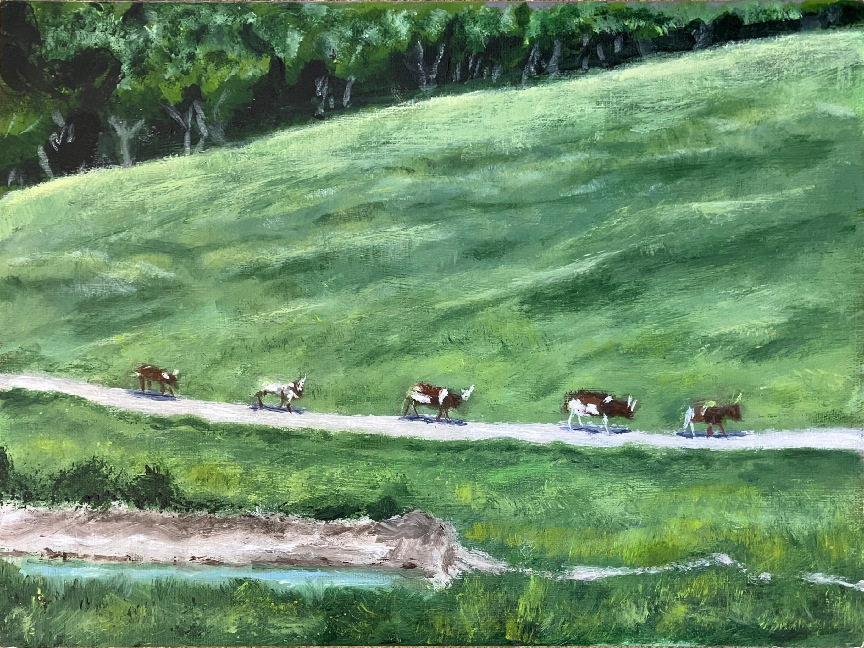Cows (Again)

Of course from the distance it's not easy for the untrained eye to pinpoint what type of cows these are.
However, from the size and shape of the horns (and when they were viewed up close) they are possibly African Ankole, Akole-Watusi, or just Watusi cattle. Such long horned cattle are part of the Watusi culture - properly called Tutsi - and have their roots traced back to Ancient Egypt as long ago as 4000 B. C. This was well before Lower and Upper Egypt (North and South) were united under the King Narmer (ergo, Menes) into one country.
The long horned African breeds were imported to Europe in the 19th Century mainly because they attracted the attention of visitors to the burgeoning zoological gardens as zoos were then called. Sometimes the horns appear to be too heavy for a cow to carry but they actuslly have a light framework which is important to help cool the animals who sometimes have to stand temperatures well above 100 degrees Fahrenheit.
Despite the venerable heritage of the cows, people will be shocked! shocked! to learn that officially Ankole-Watusi were not listed as a specific breed until 1989. Before then the name was considered a catch-all word for a number of similarly horned African cattle. So what counted as an Ankole, Watusi, or Ankole-Watusi cow seemed to be a bit flexible.
But according to the experts, today's Ankole-Watusi should appear graceful and elegant and should be well-bred. The topline (from the horn ridge to the back end) should be straight and a neck hump is nice but not considered essential. The cows can be solid color or spotted.
The horns of course are the most noticeable feature. For show cattle they should be long with a large base. Flat horns are not as preferred as circular or "lyre" shape.
References and Further Reading
"African Cattle Breeds" April Lee, Farmhouse Guide, October 19, 2022 (Updated: June 1, 2023).
"Ankole-Watusi Cattle", Department of Animal and Food Sciences, Oklahoma State University.